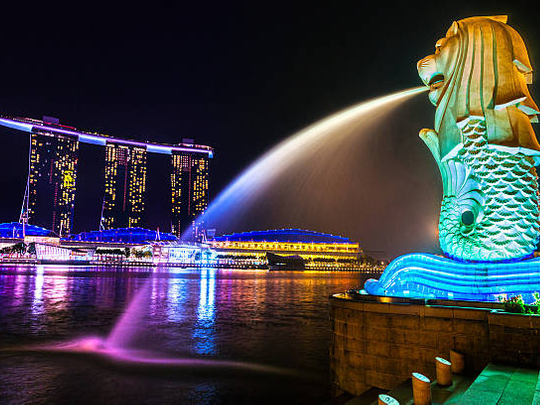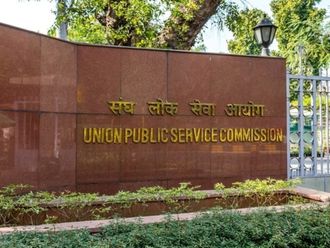
On August 9, Singapore celebrated its 53rd Independence Day. There is indeed a lot to applaud on how a small state, bereft of resources, surrounded by adversaries, has become one of the most remarkable success stories in the world.
For Lee Kuan Yew, Singapore’s founding father and former prime minister, August 9, 1965, when Singapore was expelled out of Malaysia, it was a ‘moment of anguish’. His belief all his adult life — the unity and merger with Malaysia — came crumbling down that day. Singapore felt like a destitute child thrown out of the house.
With little land, no natural resources and no hinterland, Singapore depended upon others for food, energy and even water. It was an impoverished island with a diverse population of recent immigrants who had no shared history and little to bind them into a nation.
How did Singapore do it? Some of the lessons are worth emulating and most can be planted in any other country in the world.
Blessed with a founding father like Lee, his core team — men of total commitment, resolution and integrity — followed pragmatism as the guiding principle in policy formulation. They set up a first-class education system and implemented a strict culture of meritocracy in recruitment, promotion and compensation of public servants. Recognising that “a blighted urban jungle of concrete destroys the human spirit” Lee planted trees early and now half of Singapore is covered in greenery. It is a city in a garden.
He understood that reliability and credibility were the keys to winning investor confidence. So, even before putting in the infrastructure, Lee decided to institute a system based on the supremacy of law, the acid test of which was whether it is able to produce order and justice between individuals or between individuals and the state.
To take advantage of its location in support of its aspirations, Singapore developed what was to become one of the world’s best airports, one of the best airlines, one of the best seaports and the best communications network. Once the infrastructure was in place, Lee pursued open-door policies, ensured low taxes and created an environment where foreigners would want to be.
Lee believed that the western concept of democracy leads to indiscipline and disorder, which is inimical to development. “To develop, a country needs discipline more than democracy” he said. Clean, efficient, rational and predictable government is the competitive advantage with which Lee set his governance standards. As Singapore developed, Lee not only focused on the task of governance, but he also moulded habits and social customs in Singapore. Through a determined leadership, he produced efficient administration and social discipline. Milton Friedman, the late economist, described Singapore as an example of how to do the development right.
Lee blended the diversity of Singapore’s population, giving space to each of its constituent communities, engendering their vigour and developing a competitive multi-racial, multi-cultural, multi-lingual and multi-religious society. Even the national anthem of Singapore is in Malay language.
Singapore’s success in achieving water security is extraordinary. Singapore was just about 2 per cent water-secure at the time of independence and is now at about 80 per cent water security. As a part of the separation agreement with Malaysia, Singapore enshrined the 100-year water supply from neighbouring Johar Bharu state of Malaysia. Since independence, in addition to increasing the number of water reservoirs from three to 17, Singapore has increased its land area from where water can be collected from 11 to 67 per cent. Singapore, in the process, has become a world leader in converting used water into NEWater (high-grade reclaimed water) that meets nearly 40 per cent of daily demand. Desalination produces another 25 per cent of daily requirements in Singapore. A ten-year programme cleaned up Singapore River and now Marina Dam saves the river by keeping out seawater.
No other country prepares itself so diligently for leadership transition. Two well-planned leadership transitions took place in 1990 and 2004. The next one is due soon after the elections in 2021. With no obvious successor, a core group of fourth-generation leadership is being groomed and watched to pick one as the next prime minister. A tightly laid out system based on a strong and well-organised ruling People’s Action Party finds competent leadership for all levels, which is why Singapore is where it is today.
In fact, when I had the honour of meeting Lee for the first time during the autumn of 2004, the only message he asked me to convey to the Pakistani establishment was: “Tell brother [Pervez] Musharraf to prepare for leadership transition.”
During years of my stay in Singapore, I came to admire Singapore for many of its pioneering public policies and came to describe Singapore in two words — manicured and choreographed. These two, in my view, demonstrate the idea of Singapore. You arrive and all you notice is a manicured country, which is choreographed into its motions. Not a blade of grass out of place and not a glitch in the motion of life — choreographed to perfection. Singapore is indeed a marvel of human engineering.
Majulah Singapura ... Onward Singapore.
Sajjad Ashraf served as an adjunct professor at the Lee Kuan Yew School of Public Policy, National University of Singapore 2009 to 2017. Member of Pakistan Foreign Service 1973 to 2008, he was Pakistan’s high commissioner to Singapore 2004 to 2008 and also served as Pakistan’s consul general to Dubai during the mid 1990s.








